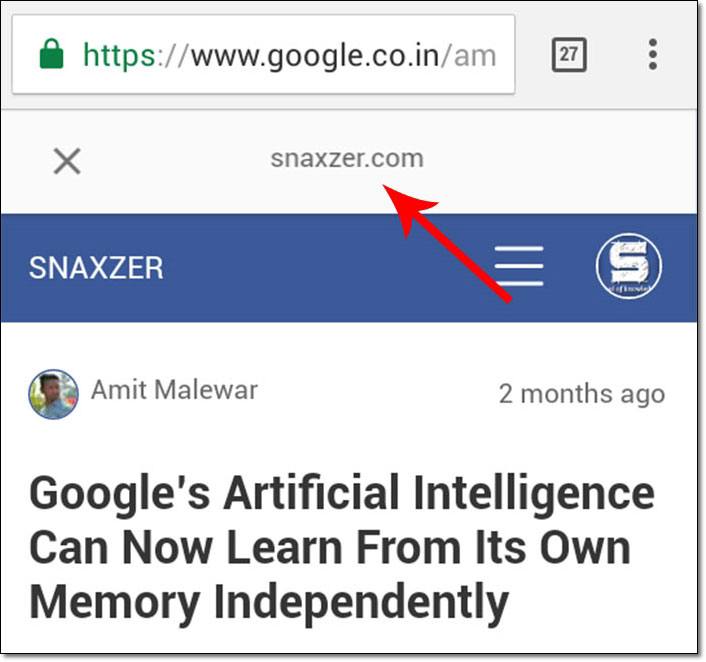Google has announced that it will change AMP display in search results to find and share URLs. This will lead directly back to publishers instead of Google itself.
Currently, AMP display appear disparately than Google regular pages. The Accelerated Mobile Pages (AMP) is an open source initiative that embodies the vision that publishers can create mobile optimized content once and have it load instantly everywhere. It is a way to build web pages for static content that render fast. Clicking at AMP content keeps people at Google, with a URL appearing.
This URL confuse people who want to share AMP content and don’t understand why a publisher’s URL isn’t showing. Publishers are also worried about how will people bookmark and share their content.
By concerning on this problems, Google is now planning to change the header that appears above AMP display. Google actually want to alter the header so that people can more easily see and copy the actual URL. At present, AMP header shows the domain of the website that can’t get clicked.
In addition to the header, Google will also provide options for sharing content on social media.
Instead of stopping AMP contents loading within its own site, Google loads AMP within its own site. By keeping things inside Google, increases the speed of pages. It makes them appear almost quickly, in some cases. Although, the system it uses protects privacy.
Google said, “It protects privacy because prerendering by loading publisher’s site might make it appear to the publisher and any tracking codes used as if someone actually visited that page.”
Google prerenders AMP by loading from its own cache and serving up AMP pages under its own domain. By prerendering through Google, publishers effectively don’t register a visit until someone actually performs a click on their content from search results.
Google said, “Using prerendering in combination with its own cache means pages load nearly instantly. Without prerendering and just using its own cache, pages might load between 1-2 seconds. Using direct URLs to AMP content hosted on publisher sites would see pages load in 3-5 seconds on good connections or much longer on bad ones.”
Google does not exactly reveal the date for the change. But, it is expected to get the change in early 2017.
Read:



